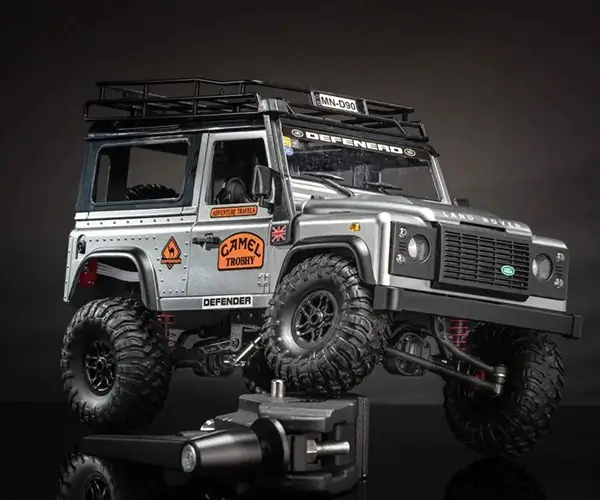Unleashing Creativity in Robotics: The Power of Combining DC Motors, Gearboxes, and 3D Printing
In the dynamic world of robotics and automation, the integration of different technologies often leads to revolutionary advancements. Among these, the fusion of DC motors, gearboxes, and 3D printing stands out as a game-changer, especially for hobbyists, educators, and small-scale innovators craving customization and quick iteration.

Understanding the Basics: DC Motors and Gearboxes
DC motors are the workhorses of small automation projects—they’re simple, efficient, and readily available. They convert electrical energy directly into mechanical motion, creating rotational movement that can be harnessed for myriad applications. However, their raw torque and speed aren’t always suitable for specific tasks; sometimes, you need more control, more power, or precisely geared movements.
That’s where gearboxes come into play. Essentially, a gearbox reduces the high rotational speed and increases torque, translating a motor’s raw energy into usable, finely tuned motion. They come in various forms—planetary, spur, worm—and choosing the right one depends on your project’s needs.
The Limitations of Off-the-Shelf Gearboxes
While commercial gearboxes deliver reliable performance, they can be expensive, bulky, or inflexible. For tech enthusiasts exploring niche applications or custom robotics, these limitations can stifle innovation. Moreover, if a designer aims to craft a compact robot, traditional gearboxes might be too large or heavy.
Enter 3D Printing: A Hobbyist’s Dream and a Maker’s Tool
Additive manufacturing, or 3D printing, offers a liberating alternative: it democratizes manufacturing. Setting up your own 3D printer means you can produce complex parts at a fraction of the cost and with almost limitless design possibilities. Material options—PLA, ABS, PETG, or even flexible filaments—allow for parts tailored to specific needs, balancing strength and weight.
Marrying 3D Printing with Gearbox Design
By 3D printing gearboxes specifically designed for a particular motor’s specifications, creators can develop highly optimized, lightweight, and compact transmission systems. Instead of buying pre-made gearboxes, enthusiasts can design their own, iterating rapidly to perfect gear ratios, tooth profiles, and housing integrates.
This approach fosters a culture of experimentation. Want a gearbox with a 10:1 reduction? No problem—just tweak the gear profile in your CAD model, print, and test. Need a custom gear shape to handle a specific load? The 3D printer can bring that vision to life seamlessly.
Advantages of 3D Printed Gearboxes in DIY Projects
Customization: Tailor gear ratios, sizes, and tooth profiles to fit unique applications or constraints. Rapid prototyping: Quickly produce and test multiple designs, iterating until the perfect fit is achieved. Cost-effectiveness: Reduce costs by printing your own components versus ordering custom parts. Accessibility: No need for specialized manufacturing facilities—just a desktop 3D printer and design software. Educational Value: For students and hobbyists, designing and printing gearboxes deepens understanding of gear mechanics and motor control.
Design Considerations for 3D Printed Gearboxes
While 3D printing opens up fantastic possibilities, it also requires an understanding of certain principles to get results that are both functional and durable:
Material Selection: For gearboxes, strength and durability are key. ABS and PETG are popular choices for their toughness.
Tooth Design: Proper gear tooth profiles, such as involute profiles, ensure smooth engagement and reduced wear.
Print Settings: High resolution, proper layering, and adequate infill patterns contribute to strength and precision.
Post-processing: Sometimes, light sanding or heat treatment can improve gear engagement and longevity.
Case Studies: DIY Robots Powered by 3D Printed Gearboxes
Many hobbyists have shared their successes online. For instance, one enthusiast designed a compact rover with custom 3D printed gearboxes that fit perfectly into the chassis, reducing weight and simplifying assembly. The ability to share CAD files and modify designs means the community is constantly evolving, with new ideas and innovations sprouting regularly.
In another example, educators incorporate 3D printed gearboxes into classroom projects, enabling students to understand gear ratios physically. This tactile learning enhances comprehension far more than theoretical lessons alone.
Would you like to see the second part focusing on specific design strategies, materials, advanced applications, or future trends?
Kpower has delivered professional drive system solutions to over 500 enterprise clients globally with products covering various fields such as Smart Home Systems, Automatic Electronics, Robotics, Precision Agriculture, Drones, and Industrial Automation.




































